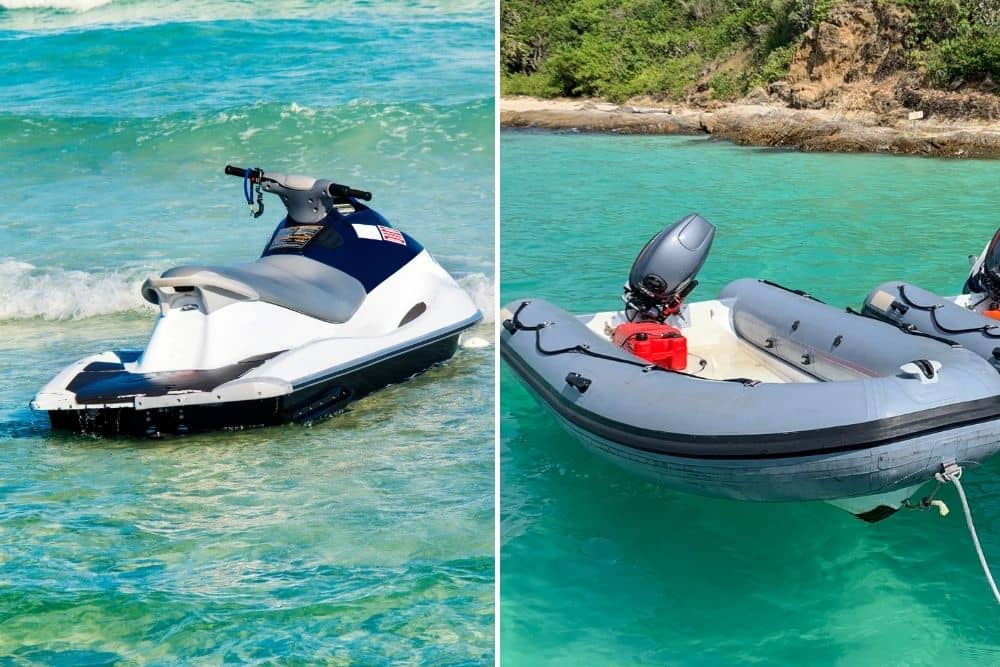There’s nothing like being out on the water. From reducing stress to letting you enjoy fishing, there’s a reason why personal boats have become so popular over the years.
One factor that adds to their popularity is the different types of watercrafts available – from soft inflatable boats and kayaks to pontoons and jet skis, there are a variety of ways people can enjoy the water.
However, their differences aren’t always clear. That’s where comparison posts like ours come in – we help break down the different vessels and make sure you know all about jet skis and inflatable boats and how they compare to each other.
Read on to find out exactly how jet skis and inflatable boats compare, and the various pros and cons associated with them!
Table of Contents
What Are Jet Skis?
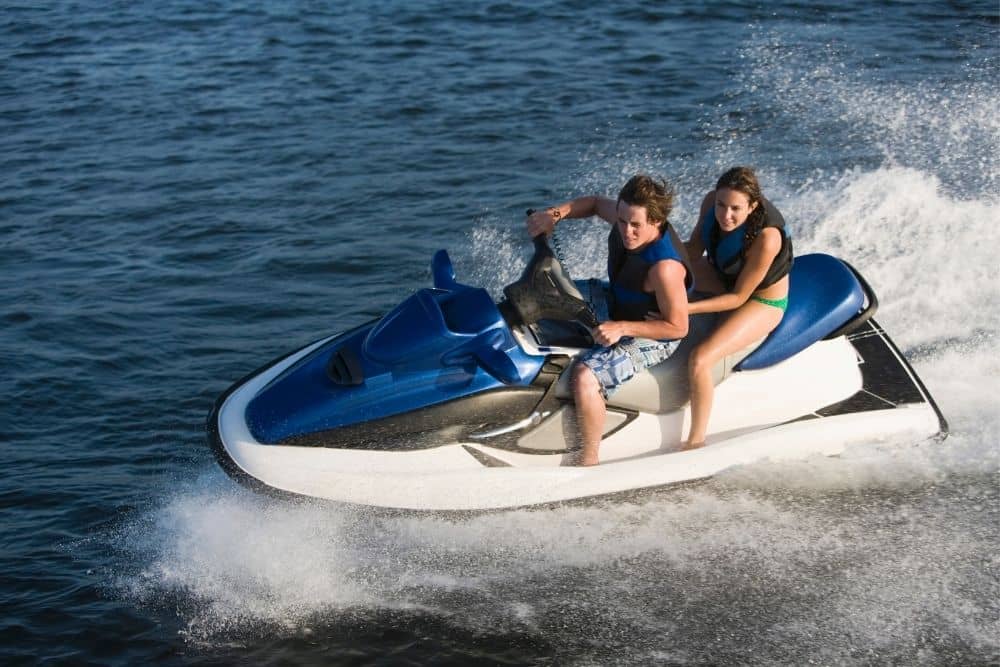
Jet skis, also known as water scooters and personal watercrafts (PWC), are recreational boats. They’re often used in activities like sport fishing and water skiing.
There are two main types of jet skis – “sit down” and “stand up” jet skis. Stand-up jet skis are designed for use by a single person, whereas sit-down jet skis can be used by multiple people at the same time.
What Are Inflatable Boats?

On the other hand, an inflatable boat is a small, lightweight vessel that is made from inflatable tubes and either a soft or rigid transom.
These boats can be inflated for use and easily deflated for storage, making them convenient options for those who value portability.
Jet Skis vs. Inflatable Boats: A Comparison
While both jet skis and inflatable boats are water vessels, they’re very different from each other. Physically, this is very clear.
However, when it comes to their features and how they are used, the differences are less obvious. That’s why we have prepared a detailed comparison which looks at their capacity, speed, different uses, and more.
Read on to discover the differences between jet skis and inflatable boats – hopefully, this guide will help you expand your knowledge on the subject.
Uses

The first factor to look at is how each vessel is used – this is where jet skis and inflatable boats differ the most.
While jet skis are used for sport fishing, they’re primarily used for recreational purposes and simply having fun on the water.
Inflatable boats, on the other hand, are known for their convenience when fishing. Since they’re so quiet and can move around the water easily, there’s no risk of spooking fish.
However, they’re very versatile and can be used as rescue boats, to travel short distances, or even as tenders.
Affordability

One of the major benefits of inflatable boats is their affordability – it’s why so many anglers opt for inflatable boats over those that are more structured.
Jet skis aren’t just a much higher investment but also need to be maintained regularly. Some of these expenses include insurance, taxes, and winterization.
While inflatable boats also need to be winterized, this can be done at home for relatively little money. On the other hand, jet skis are not easy to maintain on one’s own.
Affordability goes beyond upfront costs and maintenance – it includes fuel costs as well.
Unfortunately, when it comes to jet skis, fuel economy is not something that should be expected. With more power comes more fuel use, and jet skis are known for burning through fuel especially fast.
This is even more of a problem if individuals decide to ride at full throttle. Smaller jet skis consume less fuel. Still, this fuel consumption is much more than what inflatable boats would consume in the same time.
Small outboard engines don’t use up a lot of fuel. Thus, inflatable boats are extremely cost-effective when it comes to fuel usage. These engines provide fuel economy even when the boat is going at full throttle.
Speed
When it comes to speed, soft inflatable boats do not stand a chance against jet skis.

Jet skis are much faster than inflatable boats, with even the slowest options boasting a maximum speed of 40 mph. More powerful jet skis can even bump this up to 65-70 mph.
Inflatable boats, on the other hand, are limited when it comes to speed. This can be further affected by factors such as weight and weather conditions.
Since they aren’t manufactured to be used in extremely rough weather, going too fast in tough conditions can result in the boat flipping.
Weight
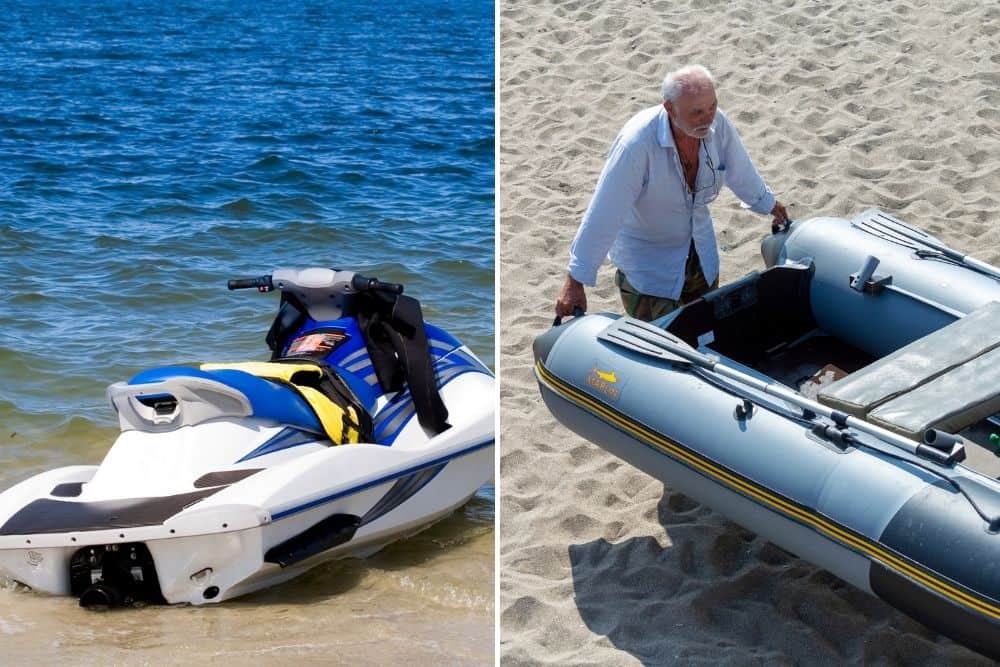
Inflatable boats are known for being lightweight and portable – most models are so lightweight that they can be deflated and stored in a car.
Jet skis, on the other hand, are much heavier – even the lightest jet ski will be substantially heavier than an inflatable boat.
It’s also important to note that the two different jet ski types vary when it comes to weight. Stand-up jet skis are much more lightweight than their sit-down counterparts because of their lightweight hulls.
Convenience
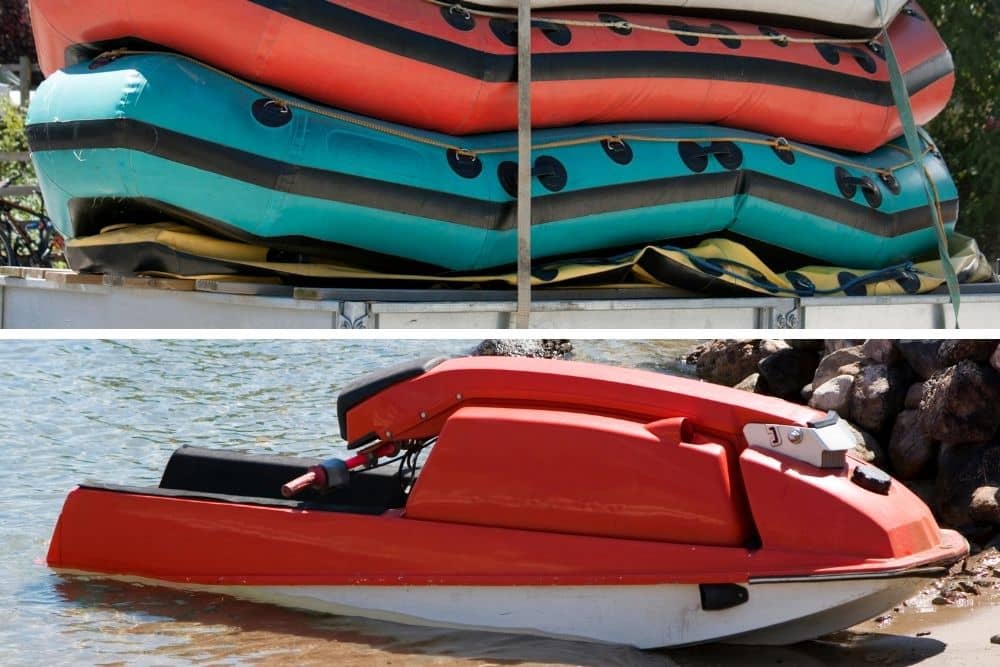
Jet skis are inconvenient in more ways than one – not only are they more difficult to deploy, they’re also a hassle to store. Because of this, they usually end up on swim platforms and get damaged.
Inflatable boats, on the other hand, are lightweight and versatile. Launching and bringing the boat back onshore is convenient, as is storage. Soft inflatable boats can be completely deflated and are easy to store throughout the year.
Materials

Some believe that inflatable boats aren’t strong and are extremely vulnerable to holes and punctures; this could not be further from the truth.
Since inflatable boats are made of durable materials like Hypalon/chlorosulfonated polyethylene (CSM), polyurethane (PU), and polyvinyl chloride (PVC), they usually last for long durations.
They’re sure to last for years, and don’t get damaged easily. However, even if there are leaks, these are easy to locate and fix, as discussed here.
Jet skis are known for their durability, and their hulls are usually made of fiber-reinforced plastic (FRP). Most jet skis on the market boast fiberglass and plastic construction or carbon fiber construction.
Capacity and Storage
Capacity and storage are where you see some big differences between inflatable boats and jet skis. While inflatable boats can transport multiple people, jet skis are more limited in their capacity.

On jet skis, you can take an additional person or two at a time. However, this leaves very little space for storage. If you exceed weight capacity, you even risk capsizing the jet ski.
Inflatable boats are more relaxed when it comes to this. While fully inflatable boats aren’t as spacious as rigid inflatable boats (RIBs), they can carry multiple people and still have room left for gear and fuel.
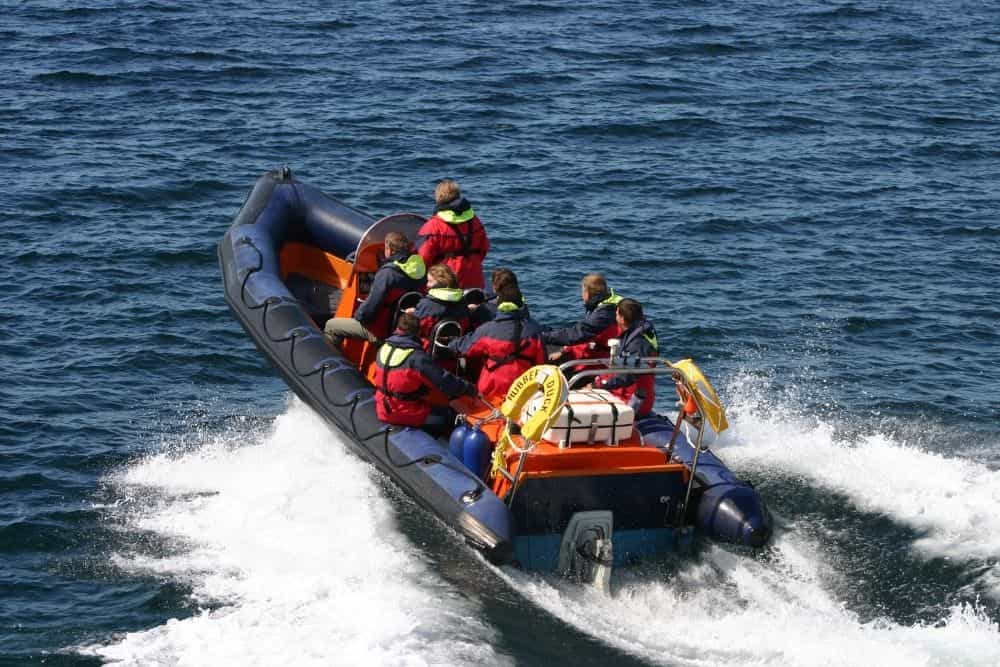
Final Thoughts
Therefore, it’s clear that inflatable boats and jet skis are very different vessels.
However, both have their place in the boating world and fulfil different functions. While jet skis are ideal for recreational activities, inflatables are known for being convenient fishing boats.
They’re also vastly different when it comes to price, storage, and even weight, and each type of watercraft has its own advantages and disadvantages.
We hope you found this article helpful. To learn more about inflatable boats, check out our article on storing inflatable boats during the winter.
For even more inflatable boat knowledge, consider checking out all of our other posts on the subject!

I created this site to help people – to help you – with your boat problems. Instead of helping one person at a time, I want this website to be the “one-stop-shop” for everyone’s boating concerns. Read more.

